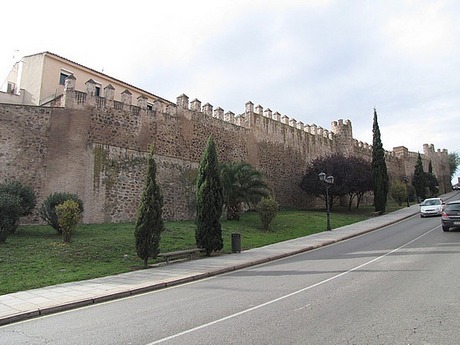City Walls
There is a lot of history in Madrid, and if you are the type of person who likes to see their history up close and personal, then a visit to the Arab Wall could be the perfect day out for you. Madrid's original murallas or Arab city walls can still be seen in the Parque del Emir Mohamed I, next to Cuesta de la Vega, just behind the Cathedral.
Dating from the 9th century, these elaborate fortifications were built to protect the Moorish settlement of Magerit or Mayrit that moved to the left bank of the Manzanares River. They stand today as reminders of the first city limits.
They originally surrounded an area of around 4 hectares, around a small castle or fort located where today's Royal Palace stands. Other palaces and castles were also built over the following centuries, until the present-day's marvelous Eastern Palace or Palacio del Oriente as the Royal Palace is known.
Other parts of the wall also date from post-Moorish times, added in the 12th and 13th centuries by the Christian settlers. The ruins of one of the corner towers, the Torre de Narigues, can also be seen at Calle Mayor number 83.
The greater part of the ruins are located within the park of Emir Mohamed I, now used as a romantic backdrop to several concerts and other cultural events during the summer months.
This is an excellent area for a relaxing stroll, the Campo del Moro or "Moor's Field", Jardines de las Vistillas and the Parque de Atenas providing welcome green areas to escape from the concrete. During summer months, the Jardines de las Vistillas play host to open air terrace cafés popular with young and trendy crowds. The spacious Plaza de Oriente square is a short walk from here.
The old city walls of Madrid radiate ancient charm and are certainly worth a visit. In 1954, the ruins were declared a National Monument, which was done with the intention to stop the deterioration caused by the multiple works in the area. The greater part of the remains is located within the park of Emir Mohamed I and constitutes a fantastic backdrop to the numerous concerts and cultural events that are organized here all throughout the summer.
The Madrid city walls or Muralla Arabe (Arabic Wall), are one of the rare remnants of Islamic Madrid. However, only a small stretch of the outer defense wall that dates back to the 9th century has survived. The wall protected a 9th century fortress built buy the founder of Madrid, Emir Mohammed I. A park named after him extends alongside the wall, and in the summer, many people gather here to enjoy concerts and plays.
The fortress, which was strategically located and always had plenty of water, was called Mayrit, and Arabic word meaning source of life. It is believed that the city’s name descends from this word. The wall was erected using flintstone blocks of varying shapes and sizes and stood at over 10ft (3 meters) in height. The site was discovered in 1953 during excavations. Among other relics found in the area were Moorish ruins from the 9th century and part of a 12th century Christian wall. On the other side of the wall, all that remains of the ancient city built within the fortress are labyrinthine streets and a plaza, which are believed to have the same layout as 1,100 years ago. You can get there via flight to Madrid.




